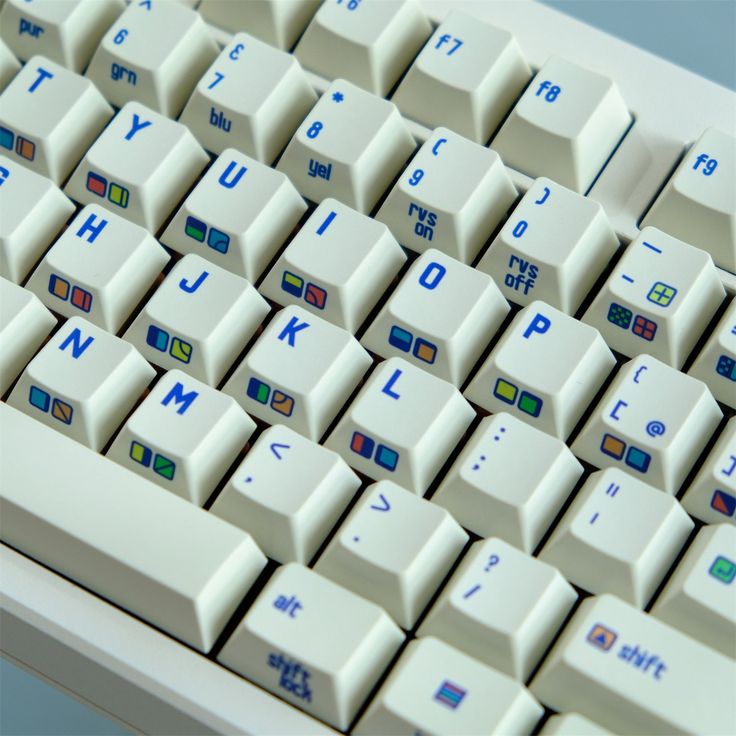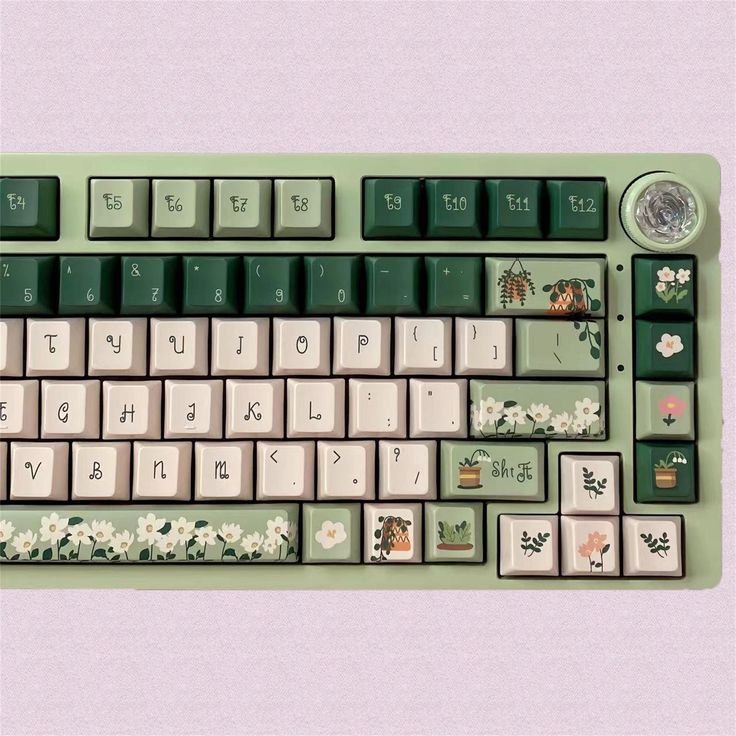The world of computer peripherals is ever-evolving, with gamers and programmers constantly on the lookout for the next tool to enhance their experience and productivity. Among these coveted tools, 80% keyboards have gained remarkable traction. Their compact design, efficient functionality, and customizable features make them a preferred choice for many. This blog delves deep into the reasons behind the meteoric rise of 80% keyboard, examining their benefits, technological advancements, and why they’ve become a staple for both gamers and programmers.
Understanding 80% Keyboards: What Makes Them Unique?
To truly appreciate the rise of 80% keyboards, one must first understand what differentiates them from other keyboard layouts. An 80% keyboard is a compact mechanical keyboard that retains the essential keys found in a full-size keyboard but omits the dedicated number pad and other less frequently used keys. This layout typically consists of around 87 keys, making it a favorite among users seeking functionality paired with space efficiency.
The absence of a number pad does not sacrifice usability; rather, it encourages a more streamlined typing experience. For many users, especially gamers and programmers, the keys that are retained in this layout are those they use most frequently. It leads to a more ergonomic positioning of the hands and reduces the amount of movement needed during use. Moreover, these keyboards often feature customizable key switches that allow users to tailor their typing experience to their personal preference, adding to their allure.

Compact Size, Enhanced Desk Real Estate
One of the primary reasons 80% keyboards have surged in popularity is their compact size. As workspace environments evolve and more professionals work from home, desk real estate has become more valuable than ever. An 80% keyboard takes up significantly less room than a traditional full-size keyboard, giving users the opportunity to declutter their workspaces and optimize their layouts.
A cleaner desk not only improves visual aesthetics but can also enhance productivity. With a minimalistic workspace, distractions are reduced, and users can focus better on their tasks. Many gamers also prefer the 80% layout as it allows them to free up room for other peripherals, such as a gaming mouse or additional monitors. The improved ergonomics of having the mouse closer to the keyboard can also result in better gameplay performance, further increasing the appeal of these compact designs.
Mechanical Marvels: The Appeal of Customization
A pivotal aspect that makes 80% keyboards particularly appealing is their mechanical nature. Mechanical keyboards have been all the rage for years now and have carved out a niche in both gaming and programming communities. Each key switch in a mechanical keyboard is an independent switch that provides tactile feedback, resulting in a more satisfying typing experience compared to traditional rubber dome keyboards.
But what sets 80% keyboards apart is their vast potential for customization. Users can choose from a multitude of different key switch types – including linear, tactile, and clicky switches – to best fit their typing or gaming style. This means that whether a programmer prefers the quiet feedback of a linear switch or a gamer enjoys the clicky sounds of a tactile switch, there’s an 80% keyboard model that can cater to their specific needs.
Moreover, customizing keycap sets, RGB lighting, and even firmware settings allows users to truly make their keyboards their own. This level of personalization enhances the emotional connection users develop with their devices, elevating them from mere tools to integral components of their gaming or programming setups.

Performance Benefits for Gamers
When it comes to gaming, responsiveness and comfort can significantly influence performance. Many competitive gamers have recognized that using an 80% keyboard can provide those crucial advantages. With the majority of gaming commands falling within the central cluster of keys retained by these keyboards, gamers can access essential functions with minimal finger movement. This can mean the difference between a last-minute save and a game-losing mistake.
The modularity of mechanical switches in 80% keyboards also allows gamers to fine-tune their tactile feedback according to their preferences. For instance, gamers who appreciate rapid keystrokes can opt for lighter switches that present less resistance, enabling them to make swift, well-timed maneuvers in games that require precision and speed.
Additionally, the reliability of mechanical keyboards boasts much higher durability than traditional membrane options. With a lifespan exceeding tens of millions of keystrokes, gamers can feel confident their keyboard won’t falter during critical moments. The anti-ghosting technology found in many 80% mechanical keyboards also ensures that multiple key presses are registered accurately, further enhancing the gaming experience.
Enhanced Typing Experience for Programmers
For programmers, typing speed and accuracy are paramount. An 80% keyboard can significantly enhance this experience, emphasizing not only comfort but also productivity. The compact layout means that everything is easily reachable, reducing hand strain during long coding sessions. Programmers often cite the effectiveness of having a dedicated function row, arrow keys, and navigational keys without distractions from additional, unused keys.
Moreover, programmers benefit from the programmability offered by many modern 80% keyboards. Users can create custom macros, remap keys, and even employ shortcuts that can streamline software development processes. This flexibility allows seasoned programmers to tailor their setup precisely according to their workflow, creating a more efficient development environment.
The tactile and audible feedback from mechanical switches can also improve overall typing accuracy. Since many programming languages rely on specific punctuations and characters, having keys that provide distinct feedback ensures fewer mistakes and allows for smoother coding. In fast-paced coding environments or during tedious debugging sessions, the reliability of an 80% keyboard can be a game changer.
Aesthetics and Personal Expression
In recent years, aesthetics have played an increasingly pivotal role in the consumer electronics market—keyboards are no exception. The rise of the 80% keyboard has coincided with a wave of creativity among users who want to personalize not just the function but also the look of their setups. The endless variety of colors, designs, keycap styles, and RGB lighting options allows users to express their personality through their peripherals.
Some users opt for retro-themed keycaps to evoke nostalgia for early computing days, while others prefer vibrant, modern designs that complement a bright gaming room. Many keyboards can now be outfitted with custom, artisan keycaps that showcase unique designs ranging from pop culture references to intricate artisan crafts.
This shift towards personalization has also led to a community focused on sharing setups and design ideas online, strengthening bonds among users. Platforms like Reddit, Instagram, and YouTube showcase individuals who take pride in their keyboards, sharing tips on how to build their 80% keyboards and create visually stunning work environments.

The Community and Support Around 80% Keyboards
The rise of 80% keyboards has not just been driven by individual preferences but also by the communities built around them. The mechanical keyboard community is vibrant, with countless forums and websites dedicated to discussions, reviews, and shared experiences. Users often exchange tips on switch types, recommend specific models, or share their custom designs, creating a rich tapestry of knowledge and enthusiasm.
Dedicated websites and groups offer support for users looking to delve deeper into the mechanics of their keyboards, whether that involves soldering custom parts or configuring firmware. This sense of community fosters inclusivity, inviting both novices and experienced enthusiasts alike to partake in the exploration of this electronic niche.
Moreover, brands have recognized this consumer behavior and tailored their products accordingly. This has resulted in a plethora of options on the market, giving users the freedom to choose 80% keyboards that best suit their needs. New products are frequently released, and established brands continually refine their offerings based on user feedback—further driving interest and growth in this segment.
Looking Ahead: The Future of 80% Keyboards
As technology continues to advance and personal computing demands evolve, the future of 80% keyboards looks promising. Users are now more aware of the importance of ergonomics and efficiency in their workspaces, and as work-from-home culture solidifies, we can expect the demand for compact and customizable keyboards to rise.
Brands are likely to keep innovating, delivering keyboards equipped with enhanced features such as wireless connectivity, built-in macros, and even AI-driven customization options that adapt to user preferences. Expect continued collaboration between brands and the user community to foster growth, product refinement, and innovation.
Conclusion: Embracing the 80% Revolution
The rise of 80% keyboards epitomizes a growing trend towards efficiency, customization, and community in the realm of gaming and programming. Their unique blend of functionality and compact design resonates deeply with modern users who value performance, aesthetics, and personal expression. As more individuals discover the benefits of these keyboards, we can anticipate they will become a ubiquitous presence on desks around the world.
In a landscape where every keystroke counts—whether unlocking your competitive edge in gaming or writing lines of code to construct complex systems—80% keyboards present a compelling option that meets and exceeds user demands. For gamers and programmers alike, embracing the 80% revolution not only enhances their experience but also transforms the very way they interact with their digital environments. The future is bright for these compact titans, and it’s evident that they’re here to stay.